What is a Project Charter? Exploring its Power in Project Management
If you are a project manager, then you must have come across the term “Project Charter” at least once in your career. If you were also astonished, then it is time to simplify it for you. Well, the world of project management is not as acute as it seems. Nevertheless, it is quite vast and includes numerous aspects of project management. One of the most crucial aspects is the Project Charter, which is a solid foundation for your project’s success. If you are thinking what it is, then fret not; we are here to unveil the significance of it. In the below guide, we are going to uncover every nut and bolt of the term project charter. You just need to read it all the way through its conclusion and empower yourself to be the best project manager.
What is a Project Charter?
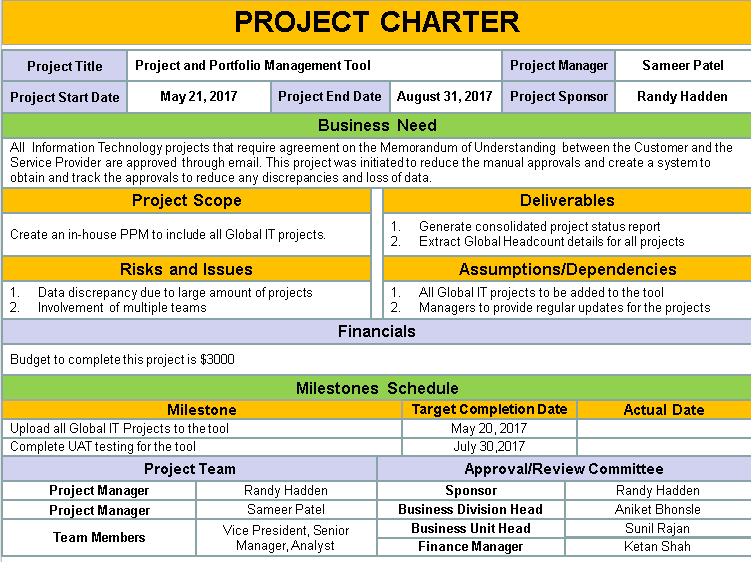
A project charter in project management is a fundamental and foundational document crafted at the inception of a project. It serves as an all-inclusive ‘elevator pitch’ explaining project objectives, scope, and responsibilities, seeking approval from key project stakeholders. Remember, creating a project charter isn’t merely a tick-box exercise – it’s an indispensable step toward project success.
Difference Between Project Charter and Project Plan
Although they may seem similar, upon comparison, you’ll find that a project charter and a project plan assume distinct roles. The charter functions as the ‘business case’ or the ‘why’ of a project, providing high-level strategic insights and stating the terms, along with the stakes at play. Crucially, without having your project charter approved, you shouldn’t embark on any work.
Contrarily, a project plan, the ‘how’ of your project, outlines timelines, allocated tasks, and workflows, detailing how the project will be executed. It’s your tactical blueprint that dives into how the elements detailed in the charter will be implemented, extending more toward detailed project management aspects.
| Project Planning Elements | Description |
|---|---|
| Project Charter | High-level strategic overview of the project, the ‘why’ |
| Project Plan | Detailed implementation strategy, the ‘how’ |
Difference Between Project Charter and Project Brief

Project briefs land somewhere smooth between a project charter and project plan. They serve as a quick snapshot for stakeholders curious about why a project is being launched and the intended approach. While the project charter sets the stage for project objectives and the project plan outlines the task-by-task strategy, briefs present the best of both worlds – encompassing the ‘why’ and ‘how’ of a project at a glance.
Difference Between Project Charter and Business Case
Predominantly, the project charter is the business case for instigating the project, albeit in a capsule form. It exemplifies the ‘why’ of your project, laying down the groundwork for your project’s existence, setting the tone, and providing guidelines for the project’s rollout.
The business case is part of the charter, responsible for garnering authorization for the project. It’s about bridging the gap between strategy and execution, indicating what the project aims to accomplish and the proposed plan to do so. To put it short, creating a defining project charter single-handedly sets your project on the pathway to accomplishment.
What’s Included in a Project Charter?
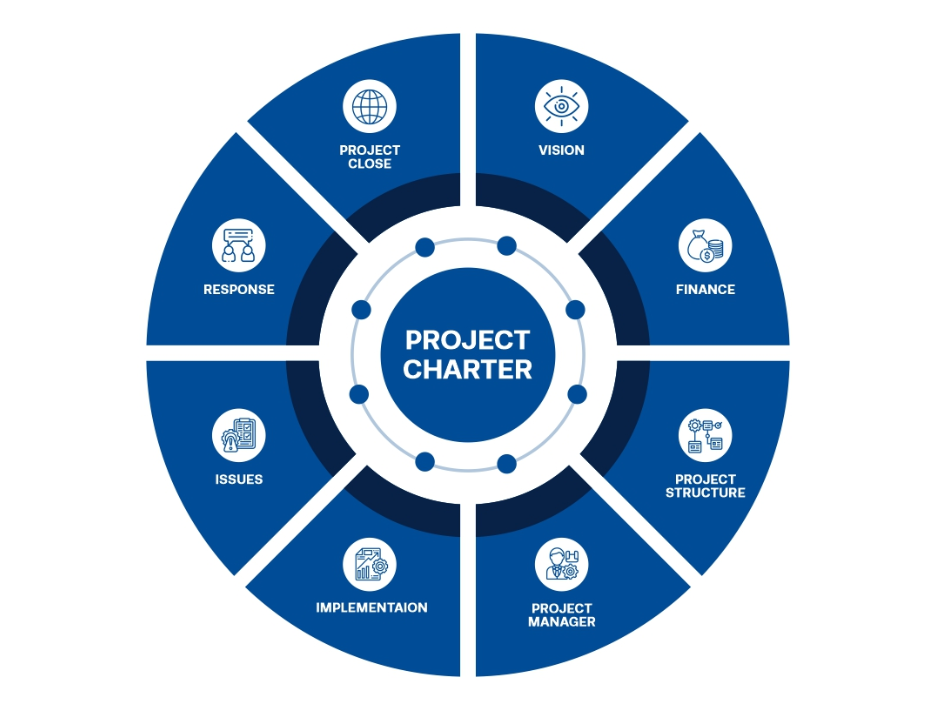
You should view your charter as the project’s essence. When you’re unsure or overwhelmed by inputs, a charter helps to reorient you and your team. It cuts through the noise and realigns the work you’re doing with your ultimate objectives. So, what exactly is included in a project charter?
- Overview: This is where the direction of the project is set. You describe what the project is, why it’s happening, and, most importantly, its purpose. The purpose of a charter is to serve as an internal marketing tool for the project, a reference guide for your team, and a crucial document to gain stakeholder approval.
- Project’s Scope: This outlines what’s expected to be achieved by the project. It defines the boundaries of the project in terms of goals, timeframe, and resources required to reach these goals.
- Approximate Schedule: Timeframes are established here, detailing when specific tasks and overall project completion should be achieved.
- Anticipated Risks: All possible risks and obstacles that might come up during the project are identified in this section. By identifying these, you can plan strategies to mitigate them early on.
- Estimated Budget: Budget allocation and funds set aside for the project are detailed here. It should be a comprehensive look at the financial resources the project would require.
- List of Key Stakeholders: The people who have a vested interest in the project or would be impacted by it are listed here.
Updating and referencing this document throughout the project lifecycle is crucial. Existing organizational process assets, such as previous charter examples or charter templates, can be of great help while drafting one. It is the business case for your project, bridging the strategy and execution gap.
Why is Project Charter so Important?

A project charter, by definition, is the official document that proclaims the existence of a project. It includes in-depth details such as goals, resource requirements, and scope. A charter serves a dual purpose: it’s both the authorization for project commencement and a reference guide throughout the process. Why is a project charter so important? The impact on a project manager’s relationship with stakeholders and its guidance capacities are key responses.
1. It Helps a Project Manager’s Relationship with Stakeholders
One of the most significant aspects of what is a project charter in project management is its effect on relationships with stakeholders. By establishing clear expectations and objectives, a charter works as an internal marketing tool, keeping everyone informed about the project. This transparency builds trust and fosters a stronger relationship between project managers and stakeholders.
In order to create a strong project charter, it’s recommended to follow the SMART method while charting out project objectives. This method ensures your objectives are:
- Specific
- Measurable
- Achievable
- Realistic
- Time-bound
Attention to these details will help streamline the communication with all the key players throughout your project lifecycle.
2. It Guides the Project
The charter plays a vital role in shaping the project. It provides direction, defines scope, sets schedules, identifies possible risks, and allocates budgets. Plus, listing the key stakeholders and everyone’s responsibilities creates clarity and helps with troubleshooting in the future. Keep in mind that unforeseen events might make the project’s charter irrelevant. For such situations, seeking a new charter might be beneficial.
The project team uses the charter as a reference point to prevent “scope creep” when project objectives are attempted to be expanded beyond the initial boundary. It’s essentially the bridge between strategy and execution. It’s no wonder why the project charter has grown in importance and visibility in recent years.
Tips for Writing a Strong Project Charter
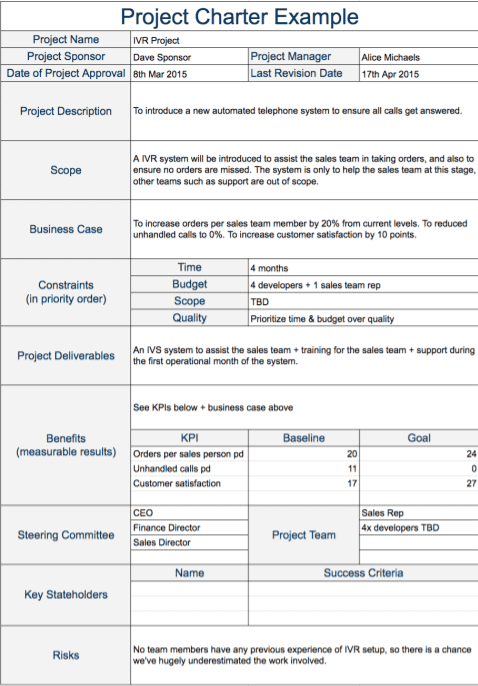
When you’re tasked with project management, understanding what a project charter is and what its purpose is can help you draft an effective document that guides your project from start to finish.
- Remain flexible and adaptive: Unforeseen events sometimes may render the original charter irrelevant. You might find your team making gradual modifications to keep the work relevant, eventually leading to the adjustment or replacement of the charter. If the change requests comprehensively cover the project objectives, they may become a new project charter.
- Formality level of the charter: Don’t let a narrow interpretation of the term “charter” mislead you into believing it’s an overly formal or complicated document. The project charter can be a simple contract outlining the project’s authorization. Its key purpose is to facilitate progress by granting approval for project activities. So it’s not always about formality; it’s about clarity and effectiveness, too.
- Business case of the charters: Crafting a compelling business case for your project charter is paramount to explaining the project’s business needs and the expected financial benefits. Your business case should convincingly portray the project’s alignment with organizational objectives.
Tools for Preparing a Project Charter
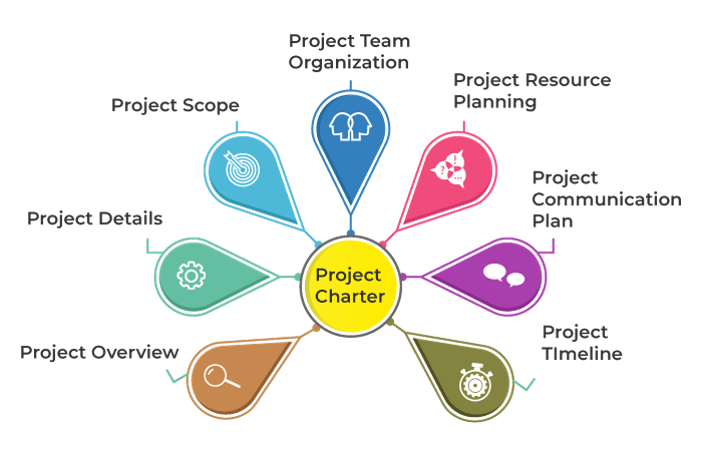
The tools for preparing a project charter are not complex. Instead, they are simple but require creativity. A well-crafted charter sets you off on the right project path, so understanding how to create one is crucial. Well, the best charters should be concise, clear, and tailor-made for the project at hand. Your charter must include the following:
- Brainstorming
- Interviews
- Focus groups
- Facilitation
- Conflict management
- Meetings
- Meeting management
- Expert judgment
Remember, the aim is to create a project blueprint without overwhelming the reader with unnecessary complexities. As a project manager, it’s your duty to ensure that the charter sets a clear path for your project’s journey.
Conclusion
All in all, project character is a crucial tool. In fact, it’s more than just a tool; it’s your project’s backbone, aligning it with your organization’s strategic vision. Remember, it’s not about creating a lengthy document but a clear, concise one that effectively communicates the project’s purpose, goals, and assumptions. In the above guide, we have discussed everything about the charter, from its creation to its significance and to the tools you should use. Embrace the insights from this article and let your project charter set the stage for a successful project journey.
Frequently Asked Questions
1. What are the essential elements of a project charter?
A project charter encompasses five core components: an overview, scope definition, initial schedule, list of necessary resources, and an estimated budget. This document is primarily drafted by a project manager.
2. How does a project charter differ from a project work plan?
A project charter is a high-level strategic document that authorizes a project, defining its scope and objectives. On the contrary, a project management plan is a detailed operational guide outlining the procedures to facilitate the project’s control and execution.
3. What is the ideal length of a project charter?
Project charters are typically brief and concise, spanning about 1-2 pages. They are written in a formal, comprehensive style. However, crafting a project charter often defaults to the project manager owing to their expertise in project execution.
4. Why do we need a project charter in project management?
The project charter is an integral document encompassing a project’s scope, goals, and benchmarks. This vital information aids in ensuring stakeholders’ alignment with the project’s purpose, vision, roles and responsibilities, timeline, budget, and other relevant details.
5. What follows the development of a project charter?
Post the creation of a project charter, and following the business case, project planning is the subsequent step. The responsibility of leading and executing this phase rests with the project manager.
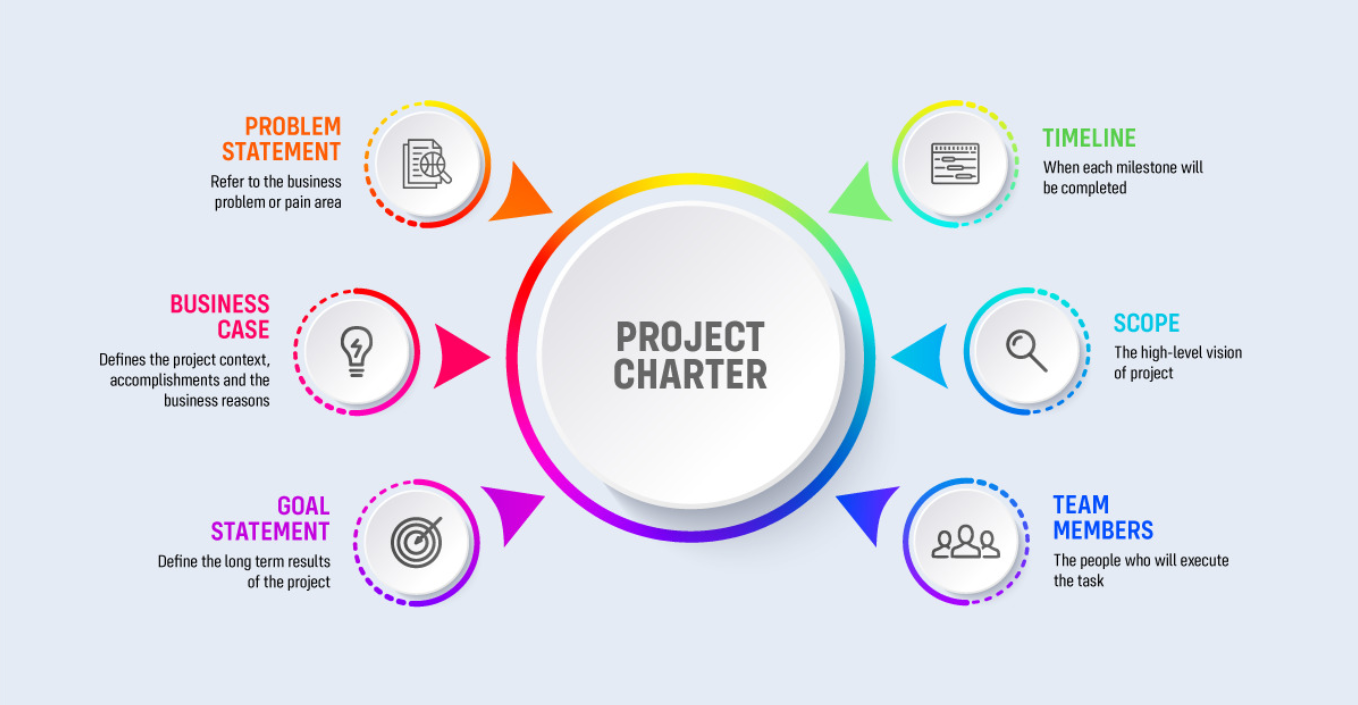
Leave a Reply